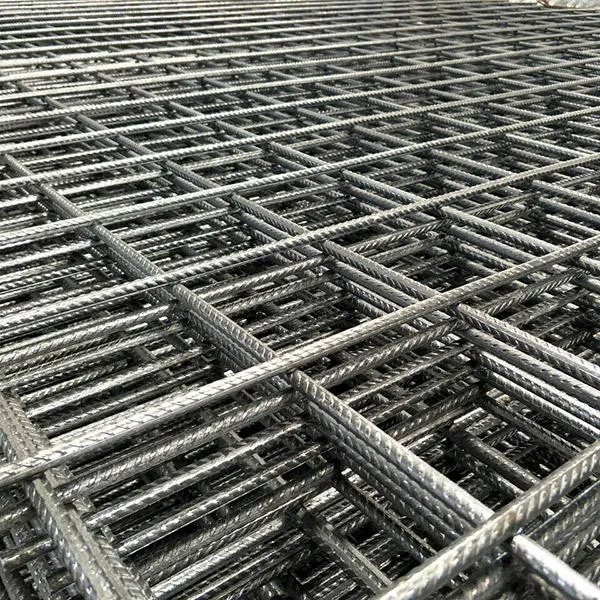May . 13, 2025 10:52 Listeye geri dön
Reinforcing Mesh: Strong, Secure, And Built to Last
In modern construction, safety, durability, and compliance are non-negotiable. Whether you're pouring a slab, building a wall, or securing a perimeter, reinforcing mesh is the silent strength behind the structure.

From standard concrete reinforcement to anti-intrusion barriers, choosing the right mesh — especially security reinforcing mesh or takviyeli çelik hasır — makes all the difference in long-term performance and peace of mind.
This guide covers the uses, types, and sourcing tips for kaliteli takviye ağı in construction and security applications.
What Is Reinforcing Mesh?
Reinforcing mesh, also known as welded wire mesh or rebar mesh, is a prefabricated grid made from high-tensile steel wires. The wires are welded together at intersections to create a rigid sheet that adds tensile strength and structural integrity to concrete.
Key characteristics:
Grid pattern: square or rectangular
Common wire diameters: 4 mm – 12 mm
Available in standard or custom sheet sizes
Compliant with international standards (BS 4483, ASTM A1064, etc.)
The mesh helps concrete resist cracking and load failure, especially in tension zones like floors, walls, slabs, and beams.
Types of Reinforcing Mesh
Reinforcing mesh is categorized by its application and wire configuration. The most common types include:
Çelik Hasır Takviyesi
Made from carbon steel or mild steel, this mesh is the standard for concrete reinforcement.
Supplied in flat sheets or rolls
Available in BRC mesh types (A142, A193, A252, A393, etc.)
Used in floor slabs, roadways, walls, foundations, and bridges
Reinforcing steel mesh is valued for its high strength-to-weight ratio and ease of installation.
Güvenlik Güçlendirme Örgüsü
Used in physical security, this mesh is built with a tighter grid and thicker wires to prevent unauthorized access or intrusion.
Common in prisons, warehouses, banks, and border fencing
Difficult to cut or climb
Sometimes galvanized or coated for corrosion resistance
Can double as reinforcement for concrete walls or barriers
Güvenlik takviye ağı combines the benefits of structural support and physical protection.
Galvanized Reinforcing Mesh
Steel wires are coated with zinc to prevent rust — essential for outdoor or moisture-prone environments.
Used in marine construction, basements, and exterior slabs
Longer lifespan with less maintenance
Custom or Engineered Mesh
Manufactured to meet specific project needs:
Varying bar sizes, spacing, and sheet dimensions
Pre-cut shapes for curved or complex installations
Ideal for precast elements and architectural designs
Why Use Good Quality Reinforcing Mesh?
Not all mesh is created equal. Good quality reinforcing mesh ensures:
✅ Structural safety — consistent weld strength and wire grade
✅ Time savings — easy handling, minimal waste, and fast installation
✅ Compliance — meets building codes and load-bearing standards
✅ Durability — resists cracking, shifting, and corrosion over time
✅ Cost-effectiveness — fewer on-site fixes and long-term maintenance
Look for mesh that meets ISO, ASTM, or BS standards with full documentation from the manufacturer.
Applications of Reinforcing Mesh
Concrete Reinforcement:
Slabs on grade and suspended slabs
Precast panels
Footings and foundations
Shear walls and load-bearing structures
Beams and columns
Security Mesh Uses:
Secure wall panels in correctional facilities or banks
Anti-cut mesh in industrial or high-value locations
Reinforced concrete barriers at military or government sites
Crash-rated perimeter security
How to Choose the Right Reinforcing Mesh
|
Factor |
What to Look For |
|
Mesh size |
Grid dimensions (e.g., 150mm x 150mm or 200mm x 100mm) |
|
Tel çapı |
4 mm to 12 mm (depends on load requirements) |
|
Sheet size |
Common sizes: 2.4 x 1.2 m, 6 x 2.4 m, or custom |
|
Coating |
Galvanized or epoxy-coated for corrosion resistance |
|
Certification |
Ensure compliance with local standards (BS, ASTM, ISO) |
|
Weld strength |
Reliable spot welds ensure load transfer between wires |
If you’re ordering security reinforcing mesh, check for:
Anti-cut and anti-climb design
Powder coating or galvanization
Minimum tensile strength specs (500–600 MPa)
Buying Reinforcing Mesh in Bulk
When ordering takviyeli çelik hasır in bulk:
Confirm wire spacing and bar diameters
Request mill certificates or test results
Ask about loading format (flat stacked vs. rolled)
Ensure transport compliance (especially for oversize sheets)
Consider storage space and on-site handling equipment
Suppliers typically sell by the sheet, square meter, or ton. Bulk orders often start at 5 tons or 200 sheets depending on mesh type.
Reinforcing Mesh FAQs
Q1: Can I use regular steel mesh for security applications?
A: Not recommended. Güvenlik takviye ağı has tighter spacing and higher resistance to cutting, which standard mesh does not provide.
Q2: What is the most common reinforcing mesh size for slabs?
A: A142 mesh (6mm wire, 200x200mm grid) is often used for light-duty slabs; A252 or A393 for heavier loads.
Q3: Is reinforcing mesh reusable?
A: Technically yes, but often not recommended — bent or rusted mesh can compromise strength and compliance.
Q4: Can I cut mesh on-site?
A: Yes, using bolt cutters or angle grinders — but plan cuts carefully to avoid waste and maintain bar overlap.
Q5: How is reinforcing mesh installed?
A: Laid on concrete chairs or spacers to keep it centered in the slab, with overlaps tied using steel wire or clips.
Whether you're strengthening concrete or securing a high-risk area, reinforcing mesh is a smart investment. Choosing kaliteli takviye ağı from a reliable supplier ensures strength, compliance, and peace of mind for your entire structure.
-
Versatile Black Annealed Binding Wire The Ultimate Solution
HaberlerJun.26,2025
-
Ultimate Chain Link Fence Solution Durable Versatile
HaberlerJun.26,2025
-
Superior Twisted Square Bar Construction Reinforcement Solution
HaberlerJun.26,2025
-
Ssential Reinforcing Mesh For Modern Construction Projects
HaberlerJun.26,2025
-
Precision Engineered Cold Drawn Wire For Heavy Industry
HaberlerJun.26,2025
-
High Strength Welded Wire Mesh Project Must Have
HaberlerJun.26,2025

